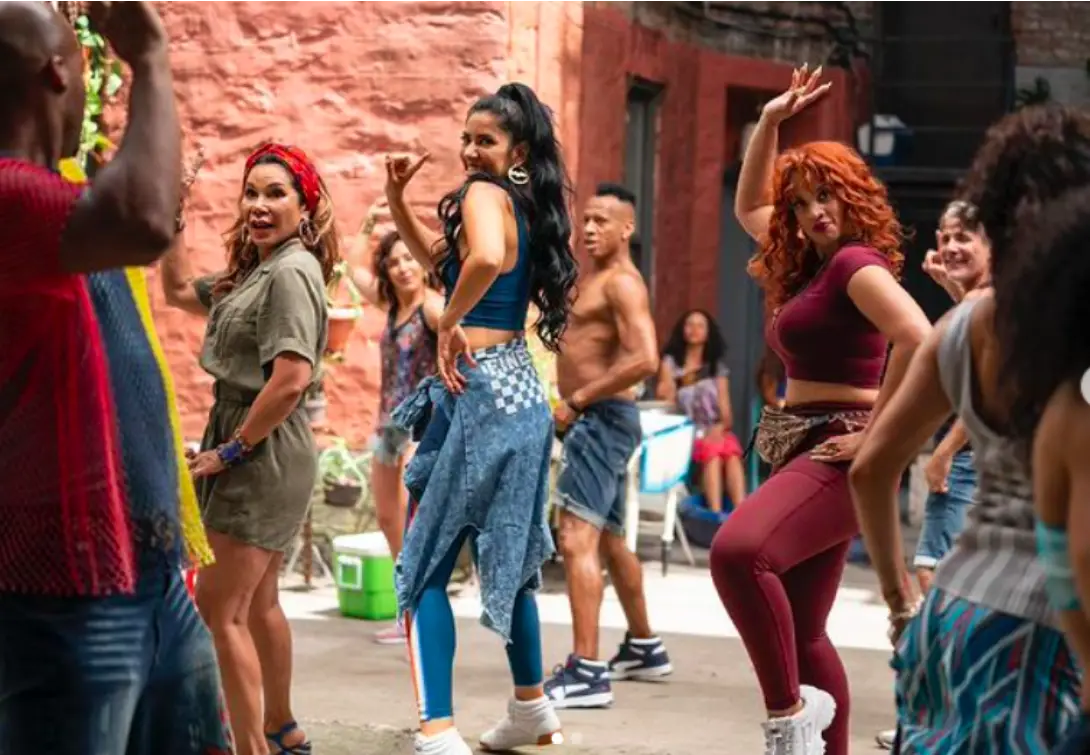“In The Heights” begins as the city awakens. Usnavi, a young man portrayed by Anthony Rivera, opens his bodega and watches as matriarchs, tourists, policemen, fathers and daughters all pass by. It’s a mundane scene made to feel magical — bright colors animate the screen, drawings illustrate a character’s words and the camera moves at a fast pace, interested in the beauty of ordinary moments.
The film is an adaptation of the 2008 musical by Lin-Manuel Miranda. It follows the lives of local Afro-Latinos residing in Washington Heights over the course of three hot, summer days. It is the “rare Latino blockbuster,” a high-profile film in a landscape where others like it are often relegated to the sidelines, or bound to reproduce tired, negative stereotypes about the Latino community in order to achieve mainstream success.
In contrast, “In The Heights” relies on theatrical escapism to convey the importance of the everyday stories within the community of Washington Heights. At its brightest, director Jon M. Chu ensures that the film dazzlingly channels the impetus of communal celebration in musical scenes such as “96,000.” In a similar vein, the film carefully evokes moments of vulnerability. One scene in particular features Nina and Benny dancing on the walls of the buildings around them as they sing about their future plans and love for one another.
The recent release also introduces a less than substantial plotline about DREAMers in an attempt to discuss some of the contemporary struggles faced by the Latino community in the United States. Although the intentions were positive, the endeavor remains less of a well-developed plot point and more of a perfunctory acknowledgment of many immigrants’ reality. The issue is only made useful in creating brief tensions to be resolved during the next musical number. And, despite the allusion to contemporary struggles, “In The Heights” insists on untethering itself from a specific time, which keeps the complexity of issues like immigration and race to a minimum. Instead, the ambiguous timeline denies some of its responsibilities regarding the representation of a range of other issues.
Such is the contradiction at the core of the film: The musical tries to be an escapist fantasy, yet its premise and political ambitions firmly ground it in specific material conditions. The consequences of the unresolved tension might be clearest when it comes to the controversy surrounding the film’s casting. As Afro-Cuban journalist Felice León pointed out, Washington Heights has a strong Afro-Dominican presence, yet most of the film casts white-passing and light-skinned Latinos, therefore erasing the Dominican presence in the neighborhood.
Some of the film’s stars have pushed back against such criticism. Melissa Barrera, who plays Vanessa in the film, has argued that the actors were chosen since they were “the right people for the roles.” But critics have replied by saying that the film is a manifestation of colorism both inside and outside the Latino community. Concepción de León, an Afro-Latina journalist, told The New York Times, “Hollywood has long valorized and highlighted fair-skinned Latinos over Afro-Latinos, often denying the latter roles that reflect their culture. It’s a limited and inaccurate representation of Latinos, who are diverse in culture and complexion.”
During one of the first scenes from “In The Heights,” Nina, an ambitious college student played by Leslie Grace, and Abuela Claudia, the matriarch of the neighborhood portrayed by Olga Merediz, have a conversation at the kitchen table. Nina is feeling anxious about her first year as an undergraduate at Stanford, an elite, predominantly white school where she feels out of place.
Abuela Claudia reassures her by sharing the story of her mother, a Cuban immigrant to the United States. When the woman first migrated, her hands were cracked by the cold of New York and the cleaning fluids she used daily as a maid. “What did she do?” asked Nina. Abuela Claudia replied, “She bought a winter coat and a pair of velvet gloves. We have to assert our dignity in small ways.” As she takes Nina’s hand, Abuela Claudia finishes her sentence: “Little details that tell the world that we are not invisible.”
“In The Heights” has done commendable work in opening up the conversation around what Latino art can look like. But in its refusal to fully acknowledge the responsibilities inherent to its ambitions, it ends up making invisible the very people it tries to represent.
















